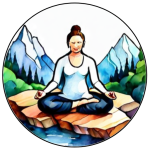Unwind Your Mind: Proven Relaxation Techniques for Stress Relief
In today's relentless world, stress has become an unwelcome, near-constant companion. Deadlines loom, anxieties simmer, and the digital world relentlessly demands our attention. But what if you could reclaim your inner peace, even amidst the chaos? The good news is you can. Mastering relaxation techniques is like equipping yourself with a personal reset button, allowing you to navigate stressful situations with greater calm and resilience. Whether you're battling chronic anxiety or simply seeking a refuge from the daily grind, these time-tested strategies can help you unearth your inner oasis.
Understanding the Stress Response
Before diving into relaxation techniques, understanding how stress affects your body is crucial. When faced with a perceived threat, your body activates the fight-or-flight response. Hormones like cortisol and adrenaline surge, increasing your heart rate, blood pressure, and breathing rate. While this response is essential for survival in dangerous situations, chronic activation due to ongoing stress can wreak havoc on your physical and mental well-being. It can lead to a cascade of problems, including:
- Anxiety and Depression: Constant stress can disrupt brain chemistry, increasing susceptibility to mood disorders.
- Cardiovascular Issues: Elevated blood pressure and heart rate strain the cardiovascular system, increasing the risk of heart disease.
- Weakened Immune System: Chronic stress suppresses the immune system, making you more vulnerable to illness.
- Digestive Problems: Stress can disrupt digestion, leading to stomach aches, irritable bowel syndrome (IBS), and other gastrointestinal issues.
- Sleep Disturbances: The racing thoughts and physical tension associated with stress can make it difficult to fall asleep and stay asleep.
Fortunately, relaxation techniques can counteract these effects by activating the parasympathetic nervous system, often called the rest and digest system. This system helps slow your heart rate, lower blood pressure, and promote a sense of calm.
Deep Breathing Exercises: Your Instant Stress Reliever
One of the simplest yet most effective relaxation techniques is deep breathing. It can be done anywhere, anytime, and requires no special equipment. Here's how to practice diaphragmatic breathing:
- Find a Comfortable Position: Sit or lie down in a quiet place.
- Place Your Hands: Put one hand on your chest and the other on your stomach.
- Inhale Deeply: Breathe in slowly through your nose, allowing your stomach to rise while keeping your chest relatively still.
- Exhale Slowly: Breathe out slowly through your mouth, allowing your stomach to fall.
- Repeat: Continue this pattern for 5-10 minutes, focusing on your breath.
Other effective breathing exercises include:
- Box Breathing: Inhale for a count of four, hold for four, exhale for four, and hold for four. Repeat.
- Alternate Nostril Breathing (Nadi Shodhana): Use your fingers to close one nostril while inhaling through the other, then switch nostrils and exhale. This technique is often used in yoga to balance the nervous system.
- Lion's Breath (Simhasana): Inhale deeply through your nose, then open your mouth wide, stick out your tongue, and exhale forcefully with a ha sound. This can release tension in the face and throat.
Progressive Muscle Relaxation: Releasing Physical Tension
Progressive muscle relaxation (PMR) involves tensing and relaxing different muscle groups in your body to release physical tension. By focusing on the contrast between tension and relaxation, you become more aware of your body's stress signals.
- Find a Quiet Space: Lie down in a comfortable position.
- Start with Your Feet: Tense the muscles in your feet for 5-10 seconds, then release and relax for 20-30 seconds.
- Work Your Way Up: Gradually move up your body, tensing and relaxing muscle groups in your calves, thighs, buttocks, abdomen, chest, arms, shoulders, neck, and face.
- Focus on the Sensation: Pay attention to the feeling of tension in each muscle group, then focus on the feeling of relaxation as you release the tension.
With regular practice, PMR can help you become more aware of muscle tension and release it more easily, reducing overall stress levels.
Mindfulness Meditation: Cultivating Present Moment Awareness
Mindfulness meditation involves focusing your attention on the present moment without judgment. It's about observing your thoughts, feelings, and sensations without getting caught up in them. This practice helps you develop a greater awareness of your internal experiences and reduces reactivity to stressful stimuli.
- Find a Comfortable Position: Sit comfortably with your back straight but not stiff.
- Focus on Your Breath: Pay attention to the sensation of your breath as it enters and leaves your body.
- Observe Your Thoughts: As thoughts arise, simply acknowledge them without judgment and gently redirect your attention back to your breath.
- Expand Your Awareness: Gradually expand your awareness to include sounds, sensations, and emotions that arise in your experience.
- Practice Regularly: Start with 5-10 minutes of daily practice and gradually increase the duration as you become more comfortable.
There are many guided meditations available online or through apps that can help you get started. Over time, mindfulness meditation can help you develop a greater sense of calm, clarity, and emotional resilience.

Autogenic Training: Harnessing the Power of Suggestion
Autogenic training is a relaxation technique developed by German psychiatrist Johannes Heinrich Schultz. It involves using mental exercises to direct blood flow and induce feelings of warmth and heaviness in different parts of the body, leading to deep relaxation.
- Find a Comfortable Position: Sit in a relaxed posture or lie down.
- Repeat the Following Phrases: Silently repeat phrases, focusing your attention on the specific sensation:
- My right arm is heavy… (repeat several times)
- My left arm is heavy… (repeat several times)
- My right leg is heavy… (repeat several times)
- My left leg is heavy… (repeat several times)
- My right arm is warm… (repeat several times)
- My left arm is warm… (repeat several times)
- My right leg is warm… (repeat several times)
- My left leg is warm… (repeat several times)
- My heartbeat is calm and regular… (repeat several times)
- My breathing is calm and regular… (repeat several times)
- My forehead is cool… (repeat several times)
- Practice Regularly: Consistent practice is key to experiencing the full benefits of autogenic training.
Autogenic training can be particularly helpful for reducing anxiety, insomnia, and pain.
Visualization and Guided Imagery: Creating Your Inner Sanctuary
Visualization involves using your imagination to create a peaceful scene or scenario in your mind. Guided imagery is a specific type of visualization that often involves listening to a recording that guides you through a relaxing experience.
- Find a Quiet Space: Sit or lie down in a comfortable position.
- Close Your Eyes: Imagine a place that feels safe, peaceful, and relaxing to you. This could be a beach, a forest, a mountaintop, or any other setting that brings you joy.
- Engage Your Senses: Imagine the sights, sounds, smells, and textures of your chosen place. Feel the warmth of the sun on your skin, hear the sound of the waves crashing on the shore, smell the scent of pine trees, and feel the soft sand beneath your feet.
- Relax and Enjoy: Allow yourself to fully immerse yourself in the experience, letting go of any worries or concerns.
Guided imagery recordings often include calming music, nature sounds, and soothing narration to enhance the relaxation experience. This technique can be particularly helpful for reducing anxiety, pain, and stress-related insomnia. You can find countless free guided imagery resources that you can take advantage of.
Yoga and Tai Chi: Moving Meditation
Yoga and tai chi are ancient practices that combine physical postures, breathing techniques, and meditation to promote relaxation and well-being. These practices can help reduce stress hormones, increase flexibility, improve balance, and cultivate a sense of inner peace.
Yoga is a therapeutic means of dealing with stress. Want to know more?
- Yoga: Yoga involves holding various poses (asanas) while focusing on your breath. Different styles of yoga range from gentle and restorative to more vigorous and challenging.
- Tai Chi: Tai chi is a gentle, flowing form of exercise that involves a series of slow, deliberate movements. It's often described as meditation in motion.
Both yoga and tai chi can be adapted to suit different fitness levels and physical limitations. Look for classes offered at local studios, community centers, or online.
Other Relaxation Techniques to Explore
In addition to the techniques described above, there are many other ways to relax and reduce stress. These include:
- Spending Time in Nature: Studies have shown that spending time in nature can lower stress hormones, improve mood, and boost the immune system.
- Listening to Music: Calming music can help slow your heart rate, lower blood pressure, and promote relaxation.
- Spending Time with Loved Ones: Social connection is essential for well-being. Spending time with supportive friends and family can help reduce stress and increase feelings of happiness.
- Engaging in Hobbies: Doing activities you enjoy, such as reading, gardening, or painting, can provide a welcome distraction from stress and promote a sense of accomplishment.
- Aromatherapy: Certain essential oils, such as lavender, chamomile, and sandalwood, have calming properties and can help reduce stress.
Building Relaxation into Your Daily Routine
The key to successfully managing stress is to incorporate relaxation techniques into your daily routine. Even just a few minutes of relaxation each day can make a significant difference in your overall well-being. Experiment with different techniques to find what works best for you, and be patient with yourself as you learn and develop your skills. Here are a few tips for integrating relaxation into your life:
- Schedule Time for Relaxation: Treat relaxation like any other important appointment and schedule it into your day.
- Create a Relaxing Environment: Designate a quiet space in your home where you can relax without distractions.
- Start Small: Begin with just a few minutes of relaxation each day and gradually increase the duration as you become more comfortable.
- Be Consistent: Aim to practice relaxation techniques on a regular basis, even when you're not feeling particularly stressed.
- Be Patient: It takes time and practice to develop effective relaxation skills. Don't get discouraged if you don't see results immediately.
The Path to a Calmer You
Stress is an inevitable part of life, but it doesn't have to control you. By learning and practicing relaxation techniques, you can equip yourself with the tools you need to navigate stressful situations with greater ease and resilience. Start exploring these techniques today, and embark on a journey toward a calmer, healthier, and more balanced you. Your mind and body will thank you for it.

